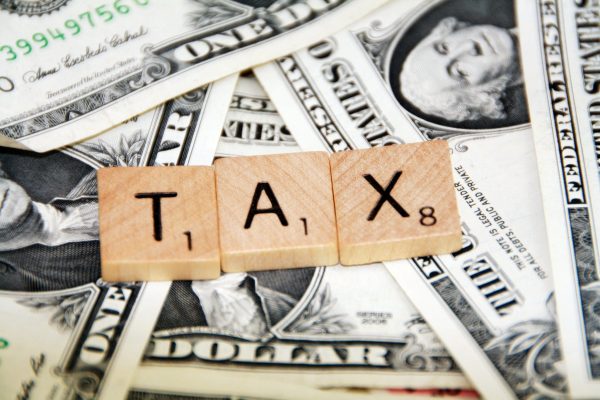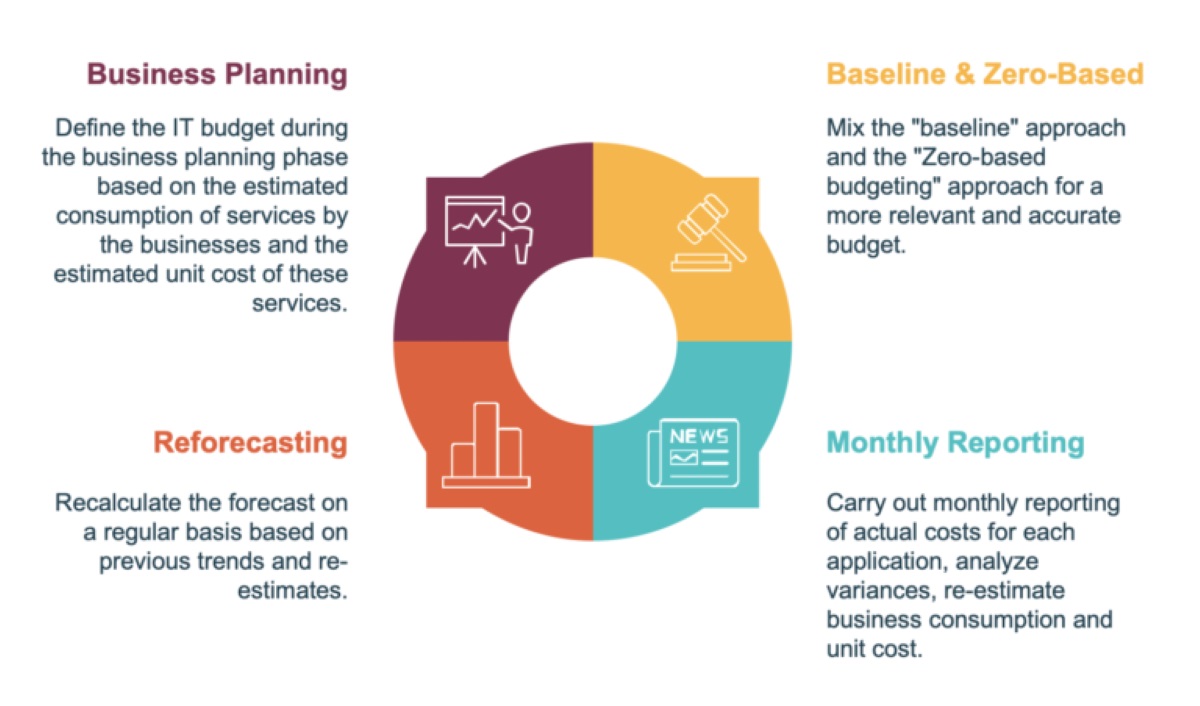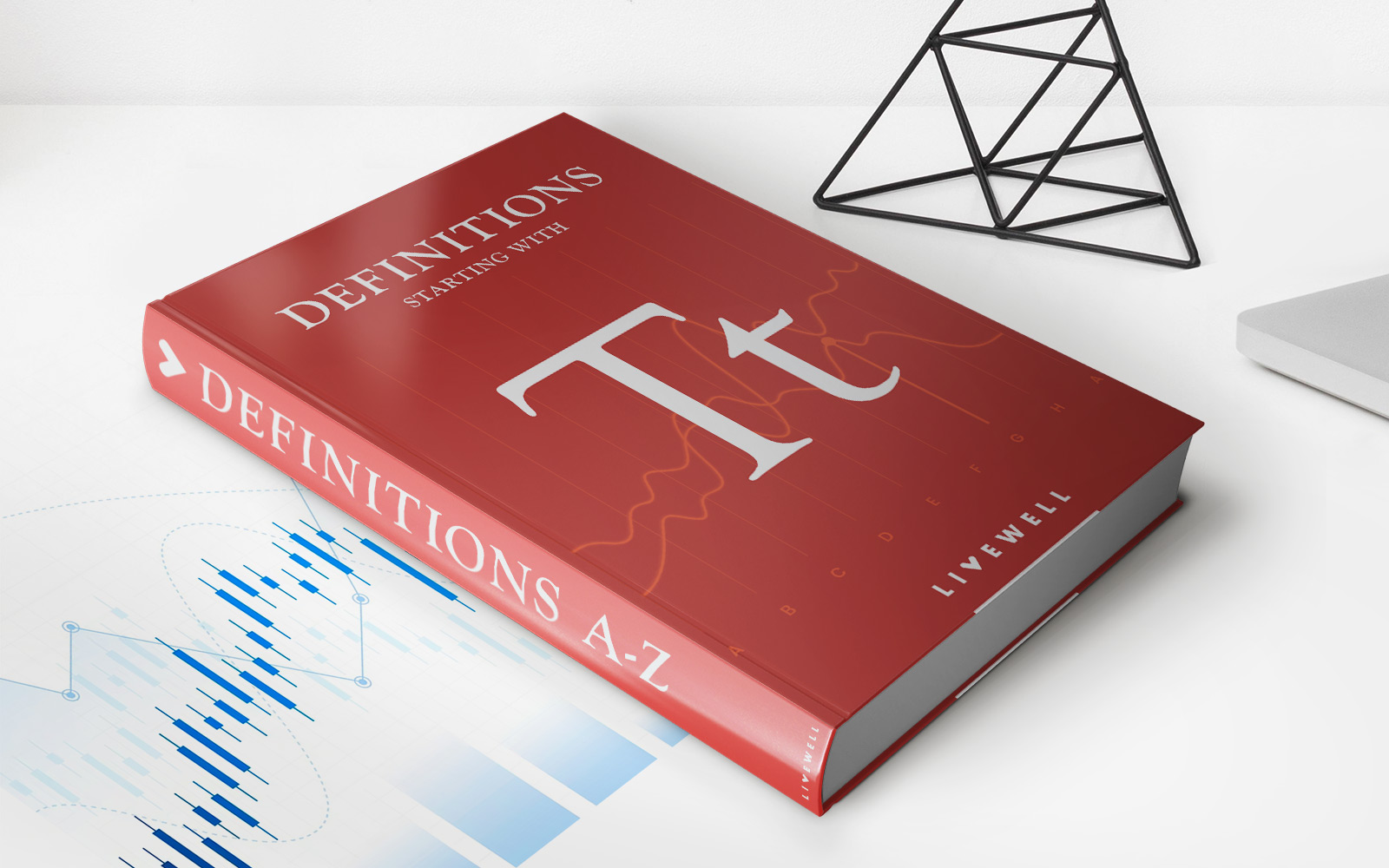

Finance
How Does Tax Credit Work On Car Trade-In
Modified: January 8, 2024
Learn how tax credits on car trade-ins can benefit your finances and save you money. Understand the process and maximize your savings.
(Many of the links in this article redirect to a specific reviewed product. Your purchase of these products through affiliate links helps to generate commission for LiveWell, at no extra cost. Learn more)
Table of Contents
Introduction
Welcome to the world of tax credits and car trade-ins! If you’re considering purchasing a new vehicle and wondering how tax credits come into play, you’ve come to the right place. This article will guide you through the ins and outs of tax credits on car trade-ins, providing you with a comprehensive understanding of how they work and how they can benefit you.
Before we delve into the specifics, let’s first define what a tax credit is. In simple terms, a tax credit is a dollar-for-dollar reduction in the amount of income tax you owe. Unlike a tax deduction, which reduces your taxable income, a tax credit directly reduces the amount of tax you owe to the government.
Now, let’s discuss car trade-ins. When purchasing a new vehicle, many people choose to trade in their current car as part of the transaction. This involves selling your old vehicle to the dealership and applying the value of that trade-in towards the purchase of the new car. This process not only simplifies the buying process but can also have implications for your tax obligations.
So, how does the tax credit work on car trade-ins? Essentially, when you trade in your car and use the trade-in value towards the purchase of a new vehicle, the trade-in value will be deducted from the purchase price for tax purposes. This means that you will only be taxed on the remaining amount after subtracting the trade-in value.
For example, let’s say you’re buying a new car for $30,000 and the dealership offers you a trade-in value of $8,000 for your old vehicle. In this case, you will only have to pay taxes on $22,000 rather than the full $30,000.
In the next sections, we will explore the eligibility criteria for tax credits on car trade-ins, how the tax credit amount is calculated, the factors that can affect the tax credit amount, and how to report the tax credit on your tax return. By the end of this article, you’ll have a comprehensive understanding of how tax credits work on car trade-ins, allowing you to make informed decisions and potentially save money in the process.
Definition of Tax Credit
A tax credit is a powerful tool that can help reduce the amount of tax you owe to the government. Unlike a tax deduction, which reduces your taxable income, a tax credit directly reduces your tax liability on a dollar-for-dollar basis. In other words, a tax credit is a direct reduction in the amount of tax you owe, making it a valuable benefit for taxpayers.
Tax credits come in various forms and can apply to different areas of taxation, such as income tax, property tax, or even specific credits for certain expenses like education or energy efficiency. These credits are often introduced by governments as a way to incentivize certain behaviors or to provide relief to specific groups of taxpayers.
When it comes to car trade-ins, the tax credit comes into play during the purchase of a new vehicle. By trading in your old car and using the trade-in value towards the purchase, you can potentially qualify for a tax credit that reduces the tax liability on the transaction.
It’s important to note that tax credits are different from tax deductions. While both can help lower your tax obligations, a tax deduction reduces your taxable income, whereas a tax credit directly reduces the amount of tax you owe. For example, if you have a tax credit of $1,000 and you owe $5,000 in taxes, the tax credit will reduce your tax liability to $4,000.
Additionally, tax credits can be either refundable or non-refundable. Refundable tax credits are those that can result in a tax refund if the credit exceeds your tax liability. Non-refundable tax credits, on the other hand, can only reduce your tax liability to zero and cannot result in a refund beyond that point.
It’s important to understand the specific rules and regulations surrounding tax credits in your country or state, as they can vary. Consulting with a tax professional or researching the tax laws applicable to your situation can provide a clearer understanding of the tax credit options available to you.
In the next sections, we will explore the mechanics of tax credits on car trade-ins, including eligibility requirements, calculations, and reporting, to provide you with a comprehensive understanding of how this benefit can impact your new car purchase.
Overview of Car Trade-Ins
When it comes to purchasing a new vehicle, many car buyers choose to trade in their old car as part of the transaction. This process, known as a car trade-in, involves selling your current vehicle to the dealership and applying the value of your trade-in towards the purchase of a new car. Car trade-ins offer several advantages and simplify the buying process for many individuals.
First and foremost, trading in your car can help you offset the cost of your new vehicle. The dealership will assess the value of your trade-in based on factors such as the make, model, condition, mileage, and market demand. The trade-in value is then used as a credit towards the purchase of your new car, reducing the overall amount you need to finance or pay out of pocket.
Another benefit of a car trade-in is convenience. By trading in your car, you avoid the hassle of selling it privately. Private sales can be time-consuming and involve advertising, negotiating with potential buyers, and handling paperwork. Trading in your car streamlines the process and saves you valuable time and effort in finding a buyer.
Additionally, trading in your car at a dealership can have potential tax advantages. As mentioned earlier, the trade-in value of your vehicle can be used to offset the cost of your new car for tax purposes. This means you may only have to pay tax on the difference between the purchase price of your new vehicle and the trade-in value of your old car, potentially resulting in tax savings.
It’s important to note that the trade-in value offered by the dealership may not always match your expectations or the estimated private sale value. Dealerships typically consider factors such as market conditions, demand, and their own profit margin when determining the trade-in value. While it may not always result in the highest possible price for your car, the convenience and potential tax benefits can often outweigh the difference in value.
When considering a car trade-in, it’s advisable to do some research and have a general idea of your car’s value before entering negotiations with the dealership. There are numerous online resources and tools available that can provide estimated values based on factors such as the car’s make, model, year, mileage, and overall condition. Being knowledgeable about your car’s value can help you make an informed decision and potentially negotiate a fair trade-in value.
In the following sections, we will dive deeper into the mechanics of how tax credits work on car trade-ins. We will explore eligibility requirements, the calculation of tax credit amounts, and factors that can impact the credit, providing you with a comprehensive understanding of how to make the most of a car trade-in when it comes to your taxes.
How Tax Credit Works on Car Trade-Ins
Understanding how tax credits work on car trade-ins is essential when it comes to maximizing the benefits of your new car purchase. When you trade in your old car and apply the trade-in value towards the purchase of a new vehicle, the tax credit comes into play by reducing the taxable amount of the transaction. Here’s a closer look at how it works:
1. Trade-in Value Deduction: The first step is determining the trade-in value of your old car. The dealership will assess the value based on factors such as the make, model, condition, mileage, and current market demand. Once the trade-in value is determined, it will be subtracted from the purchase price of the new vehicle for tax purposes.
2. Taxable Amount Calculation: After deducting the trade-in value from the purchase price, the remaining amount is considered the taxable amount. You will only be required to pay taxes on this reduced amount rather than the full purchase price of the new car. The taxable amount is what determines your tax liability.
3. Lower Tax Liability: By reducing the taxable amount, the tax credit on the trade-in effectively lowers your tax liability. This means that you will pay less in taxes for your new car purchase compared to if you didn’t have a trade-in. It’s important to note that the tax credit does not directly reduce the purchase price, but rather reduces the taxable amount and the subsequent tax obligation.
4. Potential Tax Savings: The tax credit can result in significant tax savings for car buyers. Depending on the trade-in value and the tax rate applicable to your jurisdiction, the potential savings can be substantial. For example, if the trade-in value is $10,000 and the tax rate is 10%, you would save $1,000 in taxes.
It’s important to keep in mind that tax credit rules and regulations can vary depending on the country or state in which you reside. The eligibility criteria, calculation methods, and applicable tax rates may differ, so it’s advisable to consult with a tax professional or refer to the tax laws in your jurisdiction for accurate information.
By understanding how tax credits work on car trade-ins, you can make informed decisions when purchasing a new vehicle. Maximizing the benefits of a trade-in can help reduce your tax liability and potentially save you money. In the next sections, we will explore the eligibility requirements for tax credits on car trade-ins, the calculation methods used, and factors that can influence the tax credit amount.
Eligibility for Tax Credit on Car Trade-Ins
Eligibility for a tax credit on car trade-ins is determined by the specific rules and regulations set forth by the tax authorities in your jurisdiction. While the eligibility criteria may vary, there are some general factors to consider when determining whether you are eligible for a tax credit on your car trade-in:
1. Vehicle Eligibility: In most cases, the vehicle being traded in must meet certain requirements to qualify for the tax credit. These requirements may include factors such as the age of the car, its condition, and whether it is registered in your name. Some jurisdictions may also have restrictions on the types of vehicles eligible for tax credits, such as electric or hybrid cars.
2. Ownership Duration: Some tax authorities require a minimum ownership duration in order to qualify for a tax credit on a car trade-in. This is to prevent situations where individuals purchase a car solely for the purpose of taking advantage of the tax credit and then quickly trading it in. The specific ownership duration requirement can vary, so it’s important to check the regulations in your jurisdiction.
3. Tax Residency: To be eligible for a tax credit on a car trade-in, you may need to be a resident of the country or state where the transaction takes place. This ensures that the tax credit benefits individuals who are contributing to the local economy and tax system. Non-residents or individuals living in another jurisdiction may not be eligible for the tax credit.
4. Compliance with Tax Obligations: It’s important to comply with all tax obligations and requirements in your jurisdiction to be eligible for a tax credit on a car trade-in. This includes filing your tax returns accurately and on time, reporting all income, and meeting any other applicable tax obligations. Failure to comply with these requirements could impact your eligibility for the tax credit.
5. Timely Reporting: In some cases, there may be specific deadlines or timeframes for applying for the tax credit on a car trade-in. It’s essential to understand and adhere to any reporting requirements to ensure you receive the tax credit benefits. Missing deadlines or failing to report the trade-in properly could result in the loss of the tax credit.
It’s important to note that the eligibility criteria can vary and may be subject to change. Consulting with a tax professional or referring to the tax laws and regulations in your jurisdiction will provide you with accurate and up-to-date information on the specific requirements for eligibility.
By understanding the eligibility criteria for a tax credit on a car trade-in, you can ensure that you meet the requirements and take advantage of this beneficial tax incentive. In the next sections, we will explore the calculation of the tax credit amount, the factors that can affect the tax credit, and how to report the tax credit on your tax return.
Calculation of Tax Credit Amount
The calculation of the tax credit amount on a car trade-in is dependent on several factors, including the trade-in value of the old car and the applicable tax rate in your jurisdiction. Understanding how the tax credit amount is determined can help you estimate the potential savings. Here’s an overview of the calculation process:
1. Trade-In Value: The first step in determining the tax credit amount is to establish the trade-in value of your old car. As mentioned earlier, the dealership evaluates factors such as the make, model, condition, mileage, and market demand to determine the trade-in value. The higher the trade-in value, the greater the potential tax credit.
2. Taxable Amount: After obtaining the trade-in value, it is subtracted from the purchase price of the new car. The remaining amount is known as the taxable amount. This is the value on which you will be taxed, and it is this amount that is used in the tax credit calculation.
3. Applicable Tax Rate: The tax rate imposed by your jurisdiction is another crucial factor in calculating the tax credit amount. The tax rate is expressed as a percentage and determines how much tax you owe on the taxable amount. Multiply the taxable amount by the tax rate to obtain the tax liability before considering the tax credit.
4. Tax Credit Calculation: The tax credit is then determined by applying the tax rate to the trade-in value. For example, if the trade-in value is $10,000 and the tax rate is 10%, the tax credit amount would be $1,000. This means the tax liability on the new car purchase would be reduced by $1,000.
5. Maximum Credit Limit: It’s important to be aware that there may be a maximum credit limit specified by the tax authorities. This limit sets an upper threshold on the tax credit amount that can be claimed. If the trade-in value exceeds this limit, the tax credit will be capped at the maximum allowed.
It’s important to note that the calculation methods and tax rates can vary depending on your jurisdiction, so it’s advisable to consult the tax laws in your specific location or seek the assistance of a tax professional for accurate and up-to-date information.
By understanding how the tax credit amount is calculated, you can estimate the potential tax savings when trading in your old car for a new one. In the next section, we will explore the factors that can influence the tax credit amount and potential variations in the calculation process.
Factors Affecting Tax Credit on Car Trade-Ins
Several factors can influence the tax credit amount on a car trade-in. Understanding these factors is crucial to estimating the potential tax savings and making informed decisions during the car purchasing process. Here are the key factors that can affect the tax credit on car trade-ins:
1. Trade-In Value: The trade-in value of your old car has a direct impact on the tax credit amount. A higher trade-in value results in a larger tax credit since it reduces the taxable amount for tax purposes. It’s essential to negotiate a fair trade-in value with the dealership to maximize the tax credit potential.
2. Applicable Tax Rate: The tax rate imposed by your jurisdiction plays a significant role in determining the tax credit amount. A higher tax rate results in a larger tax liability reduction and potentially greater tax savings. It’s important to be aware of the tax rate in your specific location to estimate the impact on the tax credit.
3. Maximum Credit Limit: Some tax authorities impose a maximum credit limit on car trade-ins. This limit caps the amount of the tax credit that can be claimed, even if the trade-in value exceeds the limit. It’s essential to understand the maximum credit limit set by the tax authorities to manage expectations regarding the tax credit amount.
4. Regional Variations: Tax laws and regulations can vary not only between countries but also across regions within a country. Different regions may have different tax rates, eligibility criteria, and maximum credit limits, which can influence the tax credit amount. It’s crucial to consider regional variations when estimating potential tax savings.
5. Eligibility Requirements: Meeting the eligibility criteria set by the tax authorities is essential for qualifying for the tax credit. Failure to meet these requirements may result in ineligibility for the tax credit. Therefore, it’s important to thoroughly understand and comply with the eligibility requirements specific to your jurisdiction.
6. Changes in Tax Laws: Tax laws and regulations are subject to change, and these changes can impact the tax credit on car trade-ins. It’s important to stay updated with any changes in tax laws that may affect the calculation of the tax credit amount. Consulting with a tax professional can provide valuable insights into recent legislative changes.
7. Timing of the Transaction: The timing of the car trade-in transaction can also affect the tax credit amount. Tax laws may have specific timeframes or deadlines for reporting the trade-in and applying for the tax credit. Failing to meet these deadlines could result in the loss or reduction of the tax credit. It’s important to understand and adhere to any timing requirements to ensure you receive the full tax credit benefit.
Understanding these factors that can influence the tax credit amount on car trade-ins allows you to estimate potential tax savings accurately and make informed decisions during the vehicle purchasing process. In the next section, we will discuss how to report the tax credit on your tax return and ensure compliance with tax obligations.
Reporting Tax Credit on Car Trade-Ins
Reporting the tax credit on car trade-ins correctly on your tax return is crucial to ensure compliance with tax obligations and receive the benefits of the tax credit. The process of reporting the tax credit may vary depending on the specific tax laws and regulations in your jurisdiction. Here are some general guidelines to help you report the tax credit on your tax return:
1. Gather Documentation: Start by collecting all relevant documentation related to the car trade-in, including the purchase agreement, trade-in value assessment, and any paperwork provided by the dealership. These documents will serve as evidence of the transaction and the trade-in value.
2. Determine Reporting Method: Check the tax laws and guidelines in your jurisdiction to determine the specific reporting method for the tax credit on car trade-ins. Some jurisdictions may require you to complete a specific tax form or provide detailed information on your regular tax return. It’s essential to understand the reporting requirements applicable to your situation.
3. Complete the Required Forms: If a specific tax form is necessary for reporting the tax credit, ensure that you accurately complete the form based on the instructions provided. Include all relevant details about the car trade-in, such as the trade-in value, the purchase price of the new car, and any other required information.
4. Calculate the Tax Credit Amount: Use the trade-in value and tax rate applicable to your jurisdiction to calculate the tax credit amount accurately. Double-check your calculations to ensure accuracy before including the tax credit on your tax return.
5. Provide Supporting Documentation: Depending on the requirements in your jurisdiction, you may need to submit supporting documentation along with your tax return. This can include copies of the purchase agreement, trade-in value assessment, and any other relevant paperwork. Keep the original documents for your records.
6. Review and File the Tax Return: Once you have completed all the necessary forms and calculations, review your tax return for accuracy and completeness. Ensure that you have properly reported the tax credit on the appropriate section of the tax return. If using tax software, follow the prompts to input the tax credit information correctly.
7. Seek Professional Assistance if Needed: If you are unsure about how to report the tax credit on car trade-ins or have complex tax situations, it’s advisable to seek the assistance of a qualified tax professional. They can help ensure that you properly report the tax credit and navigate any specific requirements or regulations in your jurisdiction.
By following these guidelines and understanding the reporting process, you can accurately report the tax credit on your tax return and enjoy the benefits of the tax credit on your car trade-in. It’s important to stay updated with any changes to tax laws or reporting requirements to maintain compliance and maximize your tax savings.
Common Questions and Concerns
When it comes to tax credits on car trade-ins, there are often common questions and concerns that arise. Here are some of the most frequently asked questions and concerns and their corresponding answers:
1. Can I still claim a tax credit if I finance my new car?
Yes, you can still claim a tax credit on a car trade-in if you are financing your new vehicle. The tax credit is based on the trade-in value and the taxable amount, regardless of how the new car is financed.
2. Are tax credits on car trade-ins available for both new and used cars?
Generally, tax credits on car trade-ins can apply to both new and used cars, as long as the trade-in meets the eligibility criteria set by the tax authorities. However, it’s important to check the specific tax laws in your jurisdiction to confirm the availability of tax credits for used cars.
3. What happens if the trade-in value exceeds the purchase price of the new car?
If the trade-in value exceeds the purchase price of the new car, the tax credit will be based on the taxable amount, which will be zero in this case. You may not be eligible for a tax credit beyond the actual tax liability on the transaction.
4. Can I trade in multiple cars and receive a tax credit for each one?
The ability to trade in multiple cars and receive a tax credit for each one depends on the specific tax laws in your jurisdiction. Some jurisdictions may allow tax credits for multiple trade-ins, while others may have limitations or restrictions. It’s important to consult the tax laws applicable to your location.
5. Do I have to itemize my deductions to claim the tax credit on a car trade-in?
No, claiming a tax credit on a car trade-in does not require you to itemize your deductions. The tax credit is a separate benefit that reduces your tax liability and is available even if you choose to take the standard deduction.
6. Can I claim a tax credit if I am trading in a leased vehicle?
The eligibility for tax credits on leased vehicles may vary depending on the specific tax regulations in your jurisdiction. Some jurisdictions may allow tax credits on leased vehicles, while others may not. It’s important to consult the tax laws applicable to your situation or seek professional advice.
7. What happens if I trade in a car that still has an outstanding loan balance?
If you trade in a car that has an outstanding loan balance, the trade-in value will be applied towards paying off that balance. The remaining amount, if any, can be used as a credit towards the purchase of a new car and potentially qualify for a tax credit based on the taxable amount.
It’s important to keep in mind that the answers to these questions may vary depending on the specific tax laws and regulations in your jurisdiction. Consulting with a tax professional or referring to the governing tax authorities can provide you with accurate and up-to-date information for your specific situation.
Conclusion
Understanding how tax credits work on car trade-ins can help you make informed decisions and potentially save money when purchasing a new vehicle. By trading in your old car and applying the trade-in value towards the purchase, you can benefit from a tax credit that reduces your tax liability on the transaction. Here are the key points to take away:
A tax credit is a dollar-for-dollar reduction in the amount of tax you owe. Unlike a tax deduction, which reduces your taxable income, a tax credit directly reduces your tax liability.
A car trade-in involves selling your old vehicle to the dealership and applying the trade-in value towards the purchase of a new car. This process simplifies the buying process and can have tax advantages.
The tax credit on a car trade-in works by reducing the taxable amount of the transaction. The trade-in value is deducted from the purchase price, resulting in a lower taxable amount and potential tax savings.
Eligibility for the tax credit depends on factors such as the vehicle’s eligibility, ownership duration, tax residency, compliance with tax obligations, and timely reporting.
The tax credit amount is calculated by applying the trade-in value to the applicable tax rate. The maximum credit limit and regional variations can also impact the tax credit amount.
Properly reporting the tax credit on your tax return is crucial to ensure compliance with tax obligations. It involves completing the necessary forms, providing supporting documentation, and adhering to timing requirements.
Common questions and concerns related to tax credits on car trade-ins include financing, eligibility for used cars, trade-in value exceeding the purchase price, and the ability to claim the credit for multiple trade-ins.
By understanding these concepts and addressing common concerns, you can make informed decisions and potentially save money when utilizing the tax credit on car trade-ins.
Remember, tax laws and regulations can vary, so it’s essential to consult the specific tax laws in your jurisdiction or seek the advice of a tax professional for accurate and up-to-date information.
By utilizing the tax credit on car trade-ins effectively, you can enjoy the benefits of both a new vehicle and potential tax savings, making your car purchase a little easier on your wallet.














